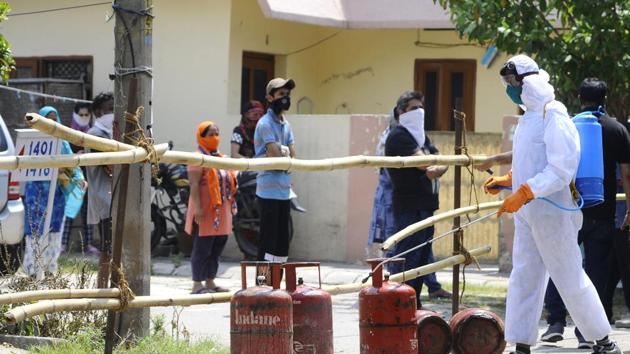Covid-19: What you need to know today
Coronavirus update: Delhi and Tamil Nadu, in that order, suffered the most from the irresponsibility of the Tablighi Jamaat, which insisted on hosting a weeks-long gathering at its headquarters in Delhi in March.
Kerala gets a lot of good press for its response to Covid-19. I have a hypothesis on that, but it can wait — perhaps for another column, perhaps forever.

There’s no denying Kerala has done well, but so have Tamil Nadu, Delhi, and Uttar Pradesh. I pick these three states and not other states that have done well (Karnataka, Haryana and Odisha, for instance) for one reason — all had something that went against them.
Delhi and Tamil Nadu, in that order, suffered the most from the irresponsibility of the Tablighi Jamaat, which insisted on hosting a weeks-long gathering at its headquarters in Delhi in March, a gathering that was attended by missionaries from some Covid-19-affected countries. And UP is, well, UP, the U in the late Ashish Bose’s coinage BIMARU, to refer to India’s most underdeveloped states in the 1980s, and also the most populous state in the country.
Delhi’s dashboard, on Wednesday night, showed 3,439 cases, 1,092 recoveries, and 56 deaths. The corresponding numbers for Tamil Nadu were 2,162, 1,210, and 27. And for UP – 2,134, 510, and 39. In terms of recoveries and deaths, all three states have done well. Kerala’s numbers on Wednesday (for an easy comparison) were 495 cases, 369 recoveries, and 3 deaths.
Sure, UP lags on the testing front — just around 360 per million population, according to the latest data — but Tamil Nadu (almost 1,500) and Delhi (almost 2,400) fare well on this count too. Tamil Nadu’s performance isn’t a surprise — for decades now, the state’s social development indicators have been among the best in the country. Nor is Delhi’s — it is the national capital, after all, and administered by a progressive government. UP is a surprise, a pleasant one, which merits deeper study. Its social development indicators remain in the red, and it is vast, in terms of geography as well as population. Yet it has managed to keep its Covid-19 numbers under control.
Delhi’s performance is at odds with how it has been treated by its neighbours. Both UP and Haryana are pushing for a hard border with the national capital, worried that people who live in UP and Haryana, and work in Delhi (there are many) or the other way round (there are perhaps as many) pose a risk. Local administrators, even ministers, have spoken of people who get infected in Delhi and carry it across the border.
Sure, these aren’t the only states to want hard borders with neighbours — in the past month, Karnataka has pushed for one with Kerala (the latter complained); Kerala then wanted one with Tamil Nadu (the latter complained); and Tamil Nadu wanted one with Andhra Pradesh (the latter complained). But Delhi’s situation is different.
It is different because Delhi is the epicentre of the National Capital Region which includes parts of Haryana, Uttar Pradesh and Rajasthan. The urban and economic development seen in parts of these states bordering Delhi is simply because of that — proximity to the capital city-state. Gurugram is a city in its own right, but it is unlikely to have become the base for the India HQs of a few hundred Fortune 500 companies were it located deeper inside Haryana, say, near Sonipat (which too is part of NCR). The same is true for Noida, which is yet to graduate from being a Delhi-satellite, though that too should happen in a few years.
There are other urban agglomerations in India — the Mumbai Metropolitan Region which includes several satellite towns in Maharashtra is one — and for years now, governments have struggled with how to manage them. The latest episode involving Delhi, Haryana, and Uttar Pradesh needs to be seen in that context. And, to the long list of personal, organisational, and governance improvements we need to focus on when this is all over, we can add one more — a better way to manage urban agglomerations across districts within the same state, and across several states.






